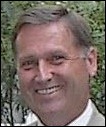Joel Diamond 7/19/11
Technology Reflections of the Past Decade
Ahhh, the dog days of summer. Hot afternoons followed by soothing evening breezes, with care-free children chasing fireflies.
The recent summer solstice sadly reminds me that 2011 is halfway gone, and I reflect on the past decade. So much has changed. The fear of Y2K was quickly overshadowed by 9/11. Technology seems to be no longer an accessory, but an intrinsic part of our day-to-day (rather, second-to-second) frenzied lives, deeply woven into our culture.
So with the first half of the first year of the second decade of the second millennium nearly over, let us look back on the incredible changes that have taken place in the past ten years—as well as the amazing transformation of physicians’ attitude towards information technology.
- Over the past decade, heart disease deaths have decreased dramatically by 40%. The routine use of cardiac stents and statin drugs have much to do with this.
- 10 years ago, cardiologist actually wrote illegible progress notes on paper. A decade later, the quality of ink in pens has markedly improved, making these records appear more vibrant and “easier to read.”
- The rise in information technology has shown a fascinating trend over the past 10 years. Some estimate that the use of CPOE has approached the remarkable 10% level.
- A decade ago, most physicians obtained pornography by looking in magazines or renting VCRs. This has vastly disappeared today, as doctor compliance with Internet pornography approaches 98%.
- Speaking of VCRs, the last 10 years has resulted in their eradication, much like dracunculiasis (also known as the Guinea worm.) Even the DVD has largely been replaced by newer technologies. The soon-starting medical student class of 2016 is completely unfamiliar with the phrase, “Programming my VCR is so difficult that only a brain surgeon could do it,”
- Despite loss of financial incentives and eventual penalties looming in 2016, the majority of neurosurgeons do not have current plans to adopt EMR technology. However, most report greater job satisfaction in 2011 despite long work hours since they seldom miss their favorite shows now that they can “TiVo them.”
- In 2011, a fascinated audience watched a computer named Watson successfully compete on the game show Jeopardy, reflecting a new era of Natural Language Processing and the prospect of vital data mining from spoken and written word. In parallel, health care analytics attained new heights as more discrete EMR data became available.
- While other industries have moved from a quaint vision of subservient secretaries “taking dictation,” doctors in 2011 have maintained this charming tradition with an unrelenting grip on their olde worlde “Dictaphone.” Some icons are worth holding onto in this gadget-crazed world of ours.
- In the year 2000, the Human Genome Project finalized the mapping of our entire DNA, leading to exciting advances in targeted gene therapy and personalized medicine.
- Today, 90% of doctors use Google Maps. Advances in Global Positioning Satellite technology have allowed many of these practitioners to use these digital maps to guide them through the complicated route from home to hospital. Interestingly, less than 1% of these clinicians report the similar use of handheld devices to routinely access vital patient data. By contrast, gene technology is beginning to see clinical benefits in 2011, although the wearing of jean shorts (or as couture designers refer to them, “jorts”) has been largely confined to clinicians in rural Kentucky.
As summer fades and days get shorter, don’t forget to raise a frosty mug to the next decade. Let’s hope that our industry, which is ranked lower in productivity than the US Post Office, will change its perspective and just try a little harder to keep pace with the rest of the world.

Joel Diamond, MD is chief medical officer at dbMotion, adjunct associate professor at the Department of Biomedical Informatics at the University of Pittsburgh, and a practicing physician at UPMC and of the Handelsman Family Practice in Pittsburgh, PA. He also blogs on interoperability.
















The article about Pediatric Associates in CA has a nugget with a potentially outsized impact: the implication that VFC vaccines…